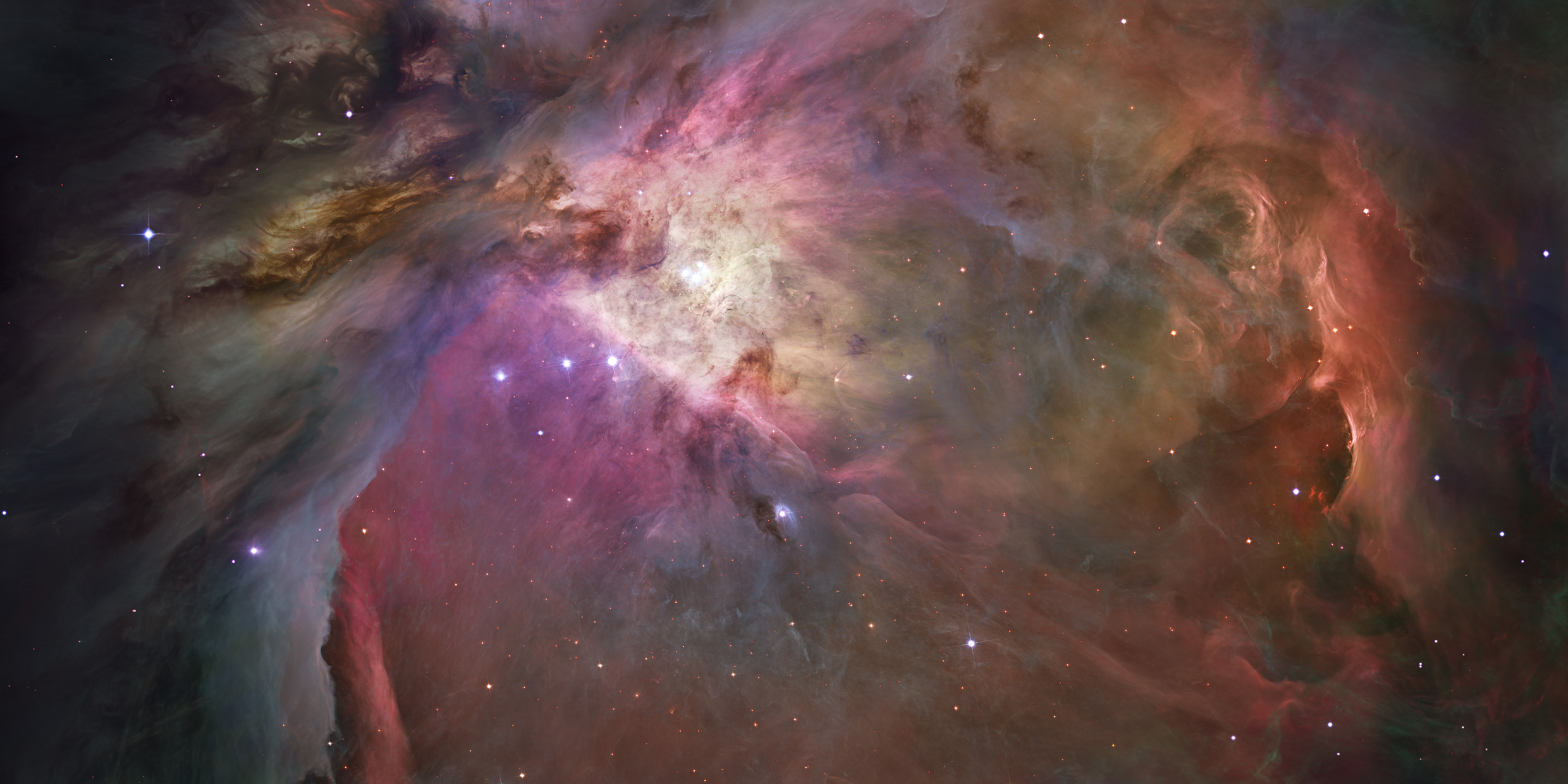Originally published 6 March 2005
Under truly dark skies our ancestors saw the middle “star” of Orion’s sword as a tiny smudge of light. The Englishman William Derham, who wrote on cosmology in the early 18th century, believed the glow in Orion was a opening in the celestial sphere through which we observe the radiance of God.
We now know that there is no such thing as a starry sphere enclosing Earth like an eggshell, nor an Empyrean beyond where reside God and the souls of the saintly departed. We live instead in a universe of possibly endless dimension, filled everywhere with stars, nebulae, and galaxies.
The smudge of light we see in Orion’s sword is revealed by modern astrophotography to be a vast region of glowing dust and gas — a nursery of stars — not a peephole through which we glimpse the divinity.
Or isn’t it?
I defy anyone to look at the Hubble Space Telescope’s image of the Orion nebula or astrophotographer David Malin’s view of the same object and not be awed.
The nebula is 1500 light-years from Earth. It is the closest and brightest of the star-forming regions that populate the arms of the Milky Way Galaxy, and contains enough hydrogen, helium, and other materials to form 10,000 stars like our Sun. The gas is made to glow by the energy of hot young stars embedded in the nebula.
Derham was perhaps not so far off the mark. In the Orion Nebula we are indeed glimpsing something of the divine. The God whose face we see there bears no resemblance to the projection of the human self that Derham’s contemporaries (like many people today) imposed upon the mysterious agency or power that creates and sustains the universe. We sense in the glowing glory of the Orion Nebula a force essentially unknown and perhaps unknowable.
The Jesuit mystic and paleontologist Teilhard de Chardin said toward the end of his life that he saw little difference between research and adoration. The contemporary writer John Updike says something of the same thing: “What we certainly have is our instinctual intellectual curiosity about the universe from the quasars down to the quarks, our delight and wonder at existence itself, and an occasional surge of sheer blind gratitude for being here.”
Einstein was once asked if scientists pray. He responded: “Scientific research is based on the idea that everything that takes place is determined by laws of nature, and therefore…a research scientist will hardly be inclined to believe that events could be influenced by…a wish addressed to a supernatural Being…But, on the other hand, every one who is seriously involved in the pursuit of science becomes convinced that a spirit is manifest in the laws of the Universe — a spirit vastly superior to that of man, and one in the face of which we with our modest powers must feel humble.”
For many people, the chasm of distrust between science and spirit may seem unbridgeable. But for many of us — awestruck, gape-jawed, skeptical of dogmas — some measure of accommodation may just be possible, some common ritual of attention and praise.
After all, science and religion spring from the same wonder that the universe exists at all, and from the same breathless urge to study, to observe, and to praise what we see.
William Derham’s contemporary, the mathematician Nicolas Malebranche, said it all: “Attentiveness is the natural prayer of the soul.”



